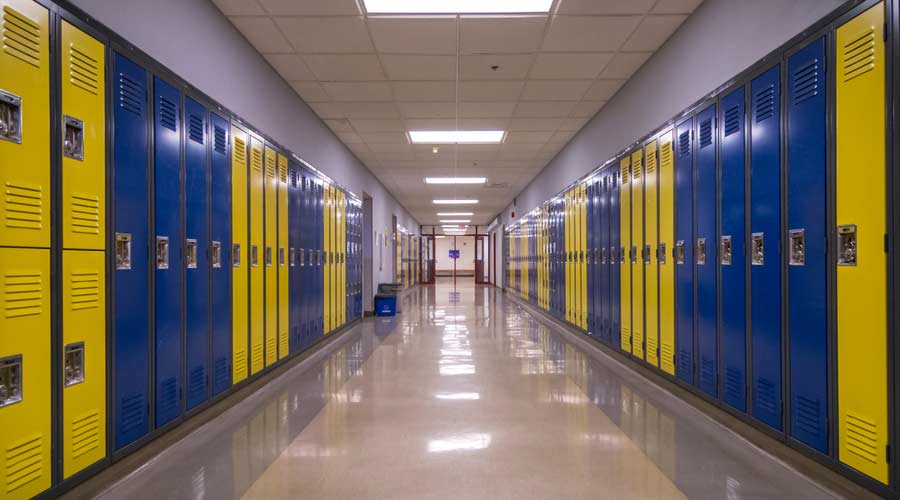
As they plan for a new school year, district officials might ask BSCs how they are preparing for potential future pandemics, or a serious flu season.
The good news is, even before the pandemic, proper cleaning and disinfecting against viruses that cause colds, respiratory infections and influenza was a routine and expected part of building maintenance. Other than changes in frequencies, cleaning processes for the 2024 school year might not look all that different from years past.
“We know that in the fall we'll see an increase in respiratory infections that are related to the seasonality of virus spread,” confirms Scott. “We can more or less predict with similar certainty that COVID is going to have that same effect on our populations more broadly, not just within but also well outside of K-12 or post-secondary institutions.”
With the signs pointing toward COVID-19 becoming an endemic seasonal infection, BSCs can keep on top of cross-contamination with proper training on how to treat surfaces and environments appropriately. They should also be aware that the SARS-CoV-2 virus is joining the ranks of the viruses and pathogens that appear seasonally.
“I think going through the pandemic gave cleaning contractors and our facility professional customers a greater aptitude for and understanding of the nature of viral transmissions,” says Scott. “It has helped us better understand the types of chemistries appropriate to mitigate the spread of viruses, as well as how to best train our team members to reduce those spreads.”
Scott sites one example of how, prior to the pandemic, most cleaning contractors were doing a lot of touch-point cleaning. Then during the pandemic, cleaning and disinfecting became more prominent and frequencies picked up dramatically and techniques for completing the tasks evolved.
“The frequency of touchpoint cleanings increased significantly during the pandemic,” says Scott. “Along with that, electrostatic or dry-fogging technologies became very common in combating viruses in schools and is still widely used today.”
With an increased focus on cleaning and disinfecting, electrostatic sprayers were used as an effective way to disinfect large surface areas and reduce cross-contamination. The sprayers apply a positive charge to liquid disinfectants as they pass through the applicator nozzle. Those positively charged droplets are then attracted to negatively charged surfaces, which allows for efficient and accurate coating of non-porous surfaces.
“These machines offer a nice secondary, reassuring step to disinfecting pretreated surfaces,” Scott says. “Clients feel a lot of comfort in having a technology that can be deployed without hands on surfaces and can be applied more broadly to more surfaces more rapidly.”
While there may be the sense that both K-12 schools and higher educational facilities might require COVID-19 cleaning protocols tailored to their unique function in the community, Scott doesn't see that as the case.
“I don't think there's any distinction in how a cleaning and disinfection plan should be pitched to a school board or to a post-secondary institution relative to commercial clients or industrial clients,” he explains. “I do think that being able to effectively communicate in which environments we would use each individual technology or technique is important. For example, when do we use touchpoint cleaning versus when do we use electrostatic technologies? Specific instances would be a really important element of describing to a client our knowledge of disinfection techniques and technologies.”
Ultimately, communication is key in approaching both existing and potential customers in light of lessons learned (and still being learned) from the COVID-19 pandemic. When discussing cleaning plans, work with customers to answer their questions. Advise them on options for frequency of cleaning and disinfecting services specifically for the eradication of pathogens. Determine if a customer would like services performed during work hours (as a show of their commitment to providing clean, safe spaces to building occupants) or specifically would not. Think about offering signage, stickers, “last cleaned by” sheets, or other materials the staff can put in place to communicate when and how the space was serviced. And always be sensitive to budget constraints and considerations.
COVID-19 has changed the way people view and choose to interact with public spaces. BSCs have the advantage of having come into the pandemic already aware of and well versed in cleaning public spaces for health and safety. This existing knowledge and the experience that comes with it are powerful tools for providing peace of mind to school officials and occupants as the COVID-19 pandemic threats recede and normal life resumes.
Shannon O'Connor is a freelance writer from Mason, Ohio.
Tackling Cleaning Concerns Before Schools Welcome Students

 Celebrating BSCAI's 60th Anniversary eBook
Celebrating BSCAI's 60th Anniversary eBook The Down and Dirty on Cleaning in Virus Season
The Down and Dirty on Cleaning in Virus Season How Surfactant Use is Expanding in Commercial Cleaning
How Surfactant Use is Expanding in Commercial Cleaning